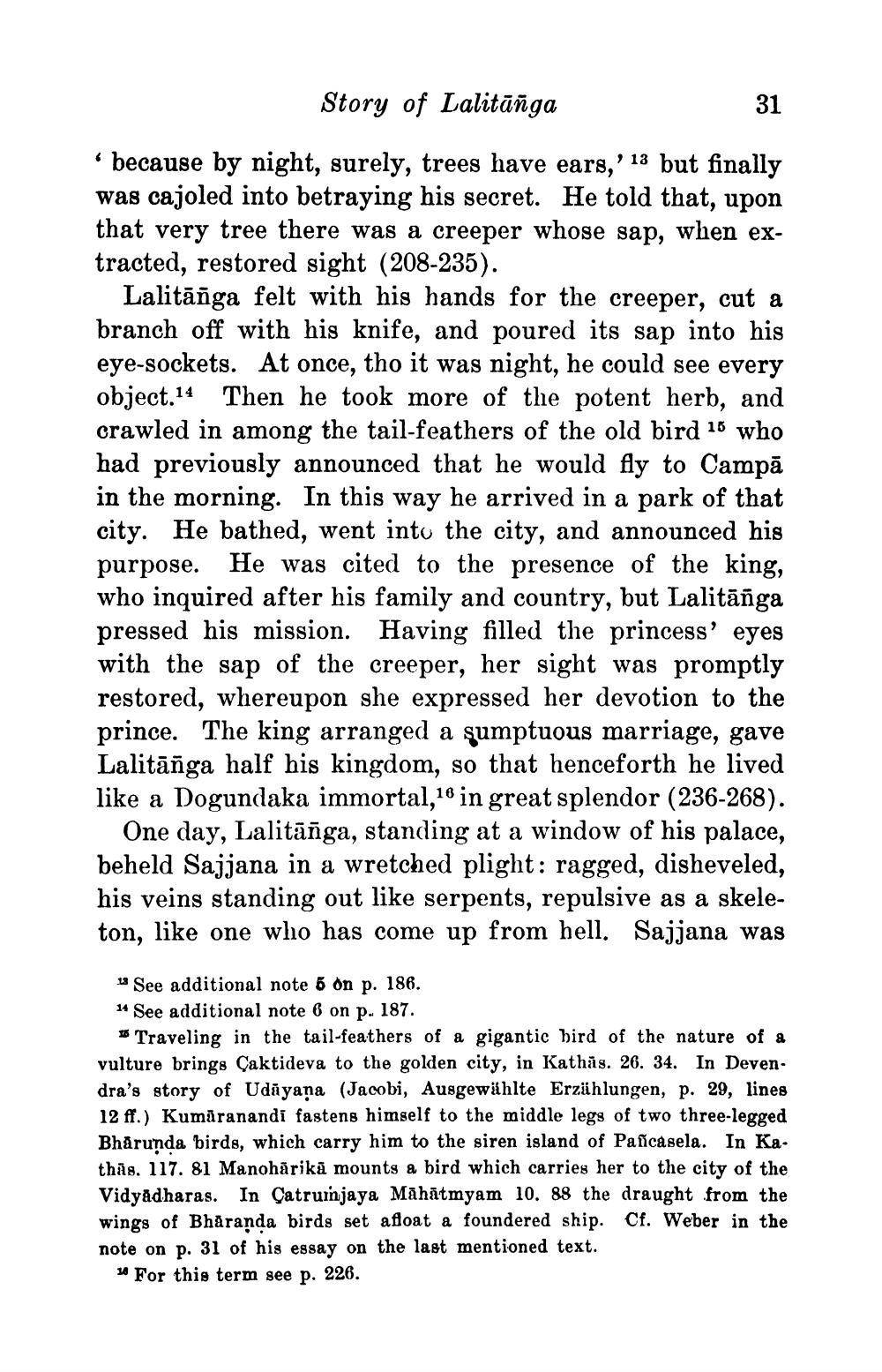________________
Story of Lalitāñga
* because by night, surely, trees have ears,' 13 but finally was cajoled into betraying his secret. He told that, upon that very tree there was a creeper whose sap, when extracted, restored sight (208-235).
Lalitāñga felt with his hands for the creeper, cut a branch off with his knife, and poured its sap into his eye-sockets. At once, tho it was night, he could see every object.14 Then he took more of the potent herb, and crawled in among the tail-feathers of the old bird 16 who had previously announced that he would fly to Campā in the morning. In this way he arrived in a park of that city. He bathed, went into the city, and announced his purpose. He was cited to the presence of the king, who inquired after his family and country, but Lalitāñga pressed his mission. Having filled the princess' eyes with the sap of the creeper, her sight was promptly restored, whereupon she expressed her devotion to the prince. The king arranged a sumptuous marriage, gave Lalitāñga half his kingdom, so that henceforth he lived like a Dogundaka immortal,16 in great splendor (236-268).
One day, Lalitāīga, standing at a window of his palace, beheld Sajjana in a wretched plight: ragged, disheveled, his veins standing out like serpents, repulsive as a skeleton, like one who has come up from hell. Sajjana was
u See additional note 5 on p. 186. 1 See additional note 6 on p. 187.
* Traveling in the tail-feathers of a gigantic bird of the nature of a vulture brings Caktideva to the golden city, in Kathäs. 26. 34. In Devendra's story of Udāyana (Jacobi, Ausgewählte Erzählungen, p. 29, lines 12 ff.) Kumaranandi fastens himself to the middle legs of two three-legged Bhårunda birds, which carry him to the siren island of Pañcasela. In Ka. thās. 117. 81 Manohărikā mounts a bird which carries her to the city of the Vidyadharas. In Çatrunjaya Māhātmyam 10. 88 the draught from the wings of Bharanda birds set afloat a foundered ship. Cf. Weber in the note on p. 31 of his essay on the last mentioned text.
* For this term see p. 226.




